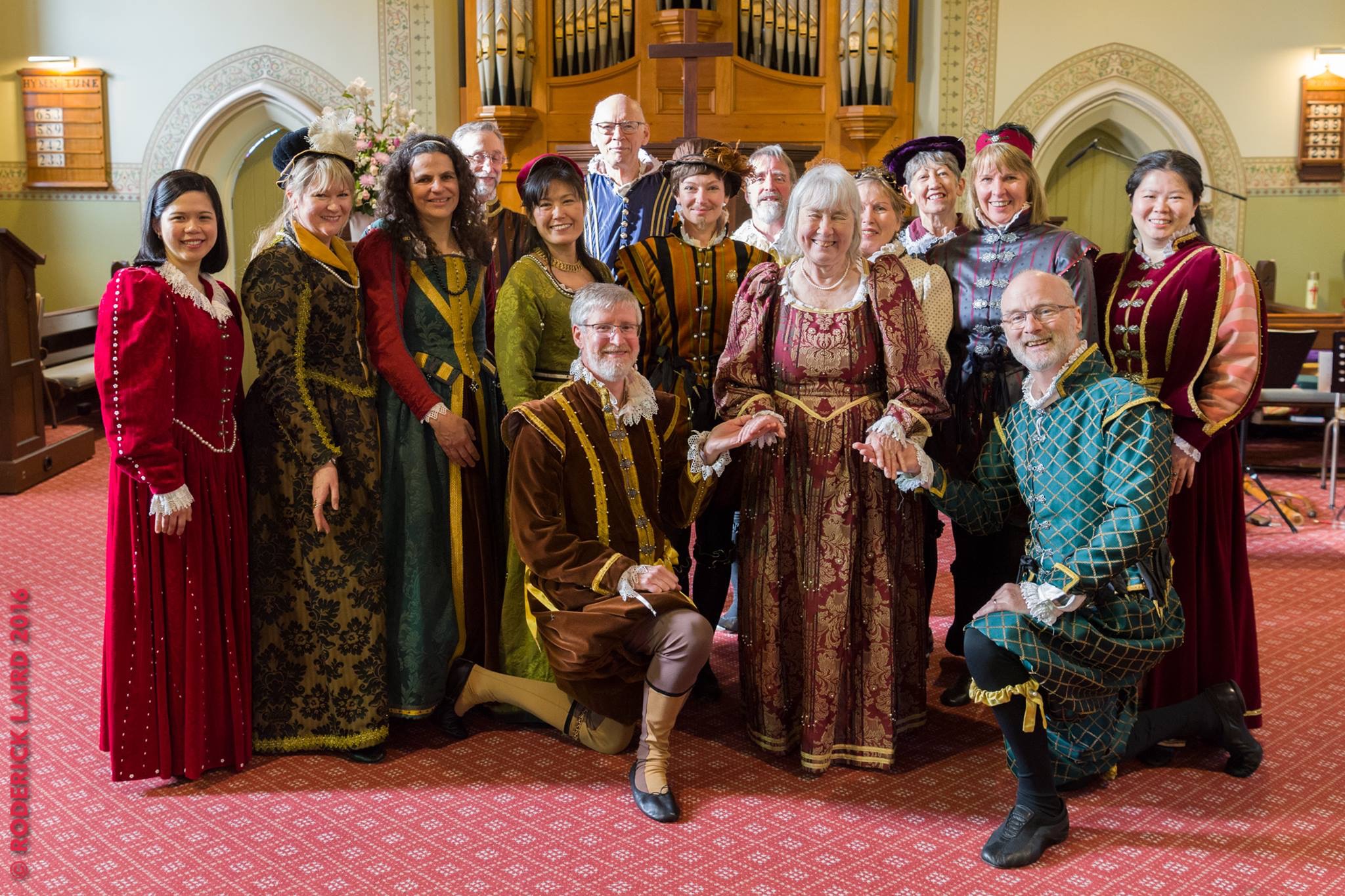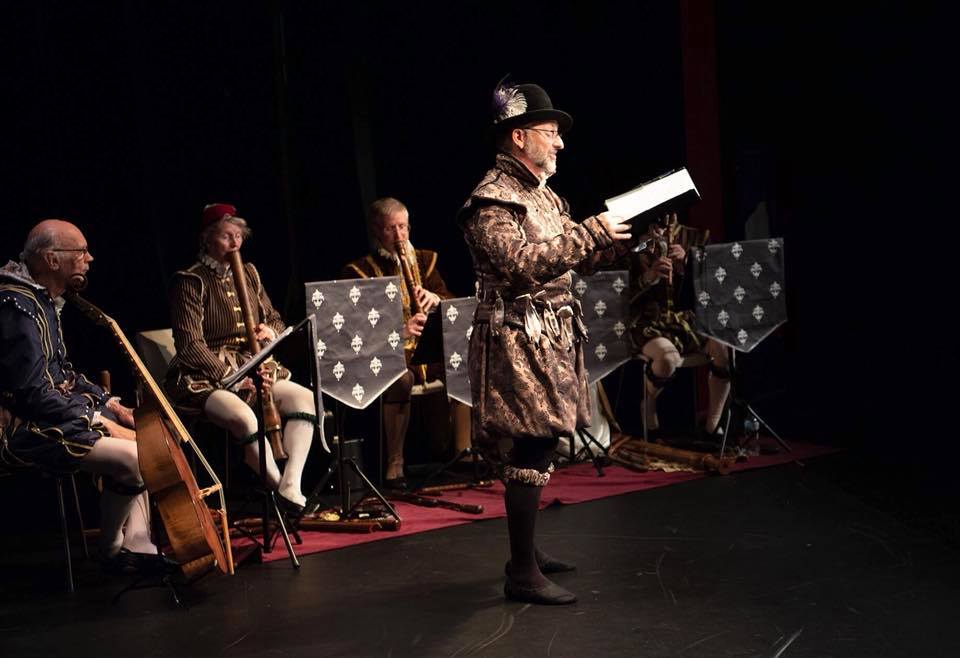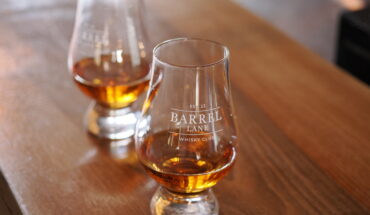On a sunny winter’s Sunday, we sat deep in the heart of a high timber-roofed colonial church and were entertained with music and dance from over 500 years past. In their Dancing With The Bard, the Courtly Arts Performers, comprising the Early Music Consort of Melbourne and the elegant Rippon Lea Dancers, presented a combination of historic instruments, court costumes and the words of the Bard in intimate showings. This combination that took us back in time to an age where time was enjoyed through felicitous and stately engagement.

Brocade work on female bodice with elements of lace collars and ruffs, fine weaving, richly adorned with cord, glass beads or pearls, handmade by Helga Hill
A fine selection of music, and text samples from Elizabeth I’s most famous playwright, William Shakespeare, entertained us with playful and witty invitations to merriment and social fun via dance, a popular expression of culture and community. Famous speeches and songs from the bard included O Mistress Mine and Full Fathom Five, invitations to ‘gallop apace’ with famous speeches from Love’s Labour’s Lost, Much Ado About Nothing, All’s Well That Ends Well, Twelfth Night, and Richard II. Whether a galliad, canario, cinquepace, or jig, the steps were delightful to observe with 21st Century eyes.
Stunningly attired in period style Elizabethan costuming, it took a lot to tear my eyes away from the fine brocade, delicate beading, bold patterns and the plague-protective frilled lace collars, not to mention the finely patterned movement, gesture, and detailed footwork, but the reproduction heritage instruments of the accompaniment, and their compositional choices, held most of us spellbound for the interlude. Inclusions of pieces by the famous John Dowland stunned in their piquant beauty centuries on but there was a broad sampling of the high formal with rollicking. The ensemble played Renaissance recorders, the fascinating-sounding krummhorns, cornamuse, viol, lute, with percussion. After the performance, the dancers and musicians freely circulated and you could observe and enquire on historical practices and modern usage.
This group, in operation since 1978 under OAM Helga Hill, with her husband Mark, are experts in all things arts Renaissance, dedicated to bringing alive historic works from the medieval through to the Baroque periods. Helga’s hand sewn attire is a work of art worthy of any museum, and a skillful craft requiring many hours of work. Each artist’s garb is unique and stylised with character- some are the clothes of a gentlemen, some young squires, some ladies of the manor or younger maidens. Their hats, tights, footwear, ribbons, hairstyling and deportment are all historically accurate and are a history lesson in themselves.
Dance in the 1500-1600s held ritual significance and aside from being a pleasurable pursuit, spoke of social rank and power in the English court and was very much a ritual display of position. It was also a chance for ladies and gentlemen to flirt and mix. The dances worked in oppositional partnering, gallops, hops, circles, facing and turning away, and involved jigs, hops, light petit allegro, and patterned design along the diagonal, in circles, as a group, or in pairs. The imperative was to be spritely, sorrowful, or humourous and gave a good workout. The Queen herself loved dancing and was doing it right into her old age. 
We achieved a real sense of the musical pastimes of the age, with calls to the ocean, royalty, returning lords or ladies, sadness, joy, all the beauty that words, music and dance can express.
The group have commenced their June season of introductory Renaissance dance classes – Learn The Courtly Art of Dance. If you can picture yourself in a pavane or an almaine, would like to learn or become a performer, sign up. They also take applications from musicians. The group is warm, welcoming, knowledgeable, and committed to keeping the civil and harmonious courtly arts alive in our fast-paced modern world.
– Sarah
Sarah Wallace is a dance-trained Theatre Specialist with a flair for the bold, and non-traditional performance platforms. On the street, or in the box seat, she looks for quality works that push the envelope.
Dancing With The Bard showed 27 May and 3 June (120 mins) at The Clayton Theatrette and Trinity Uniting Church, Brighton as part of their Resonance: 2018 Music Series.
Read here if you wish to become a Courtly Arts performer or sign up for their newsletter. They tour local and regional and have an excellent Christmas showcase.
Find out about the introductory Courtly Art of Dance classes here. Book tickets here.
Disclosure: The Plus Ones were private guests.
Images: Roderick Laird.





